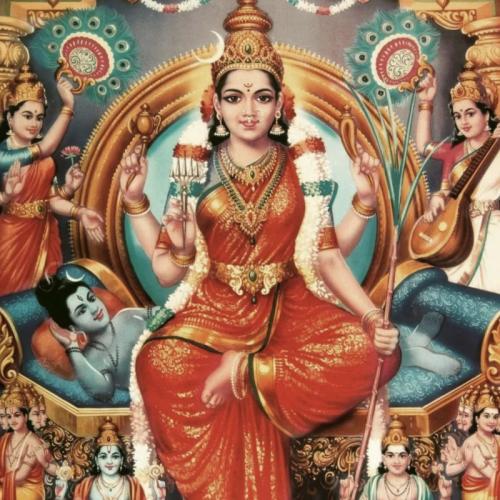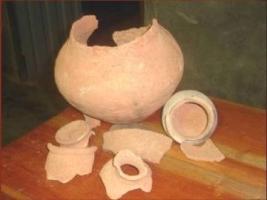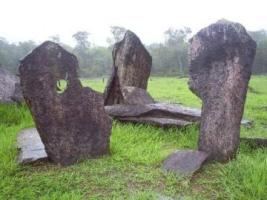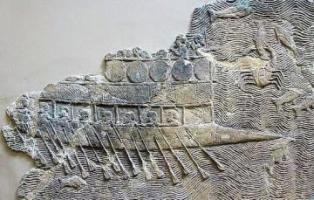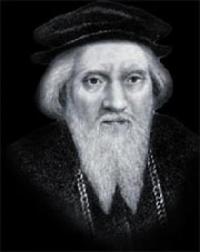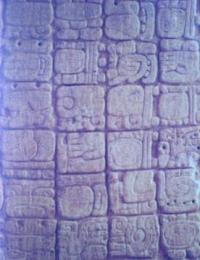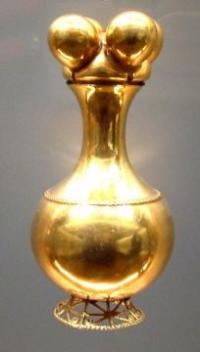Specialist in Things Tantric - STS NEWS # 7

File: News#792
STS NEWS # 7 March, 1992
UPCOMING STS CONFERENCE
The May 1992 STS meeting. This is the final call for papers for this year's meeting. The call is self- explanatory but one point should be noted. The program is not full, in spite of the impression that some of the STS constituency gathered from a previous mailing. If you have a relevant topic for this venue, drop a note to Richard Payne (or call or fax him).
Future Meetings: The May 1992 meet ing has enough committed participants so that we know it will work. However, two previous meetings have been canceled because sufficient commitment came too late to make secure arrangements. The primary difficulty seems to have been not an intrinsic lack of interest in the proposed programs, but very concrete practical difficulties in individual funding. Most STS members are dependent on university funds to cover or at least supplement the cost of attending scholarly meetings. This usually means choosing one, or at most two, meetings per year. To the extent that STS constitutes an additional meeting beyond those we must normally attend, it tends to get squeezed out of limited university budgets and therefore out of our personal budgets as well.
AAR or AAS The only obvious way to get around this dilemma would seem to be to link STS meetings to the annual meeting of an appropriate academic organization. When this was first suggested several years ago, two venues seemed likely, the annual meeting of the Association of Asian Studies or the annual meeting of the American Academy of Religion. The STS constituency at that time split in half in its response to the these suggestions. Moreover, the split tended to be a rather harsh one with comments like, "You couldn't pay me to attend the ------ meeting" or "Since I can only afford to attend one meeting the ------ is simply out for me."
Pros and Cons: AAR: Disadvantages cited by those against joint meetings with the AAR focused on the vast size of the meeting and assertions that even its non-Western sections tended to prosecute fundamentally Western (and/or crypto-theological) conceptual agendas. AAR advantages cited were its undiluted focus on religious issues and its status as the "institution of record" for religious studies.
Pros and Cons: AAS: Negatives directed at the AAS consisted primarily of the limited number of panels available for the discussion of religious studies issues. On the positive side for the AAS were the relatively relaxed rules for meetings in con junction with the organization as well a perceived commitment to cross-cultural and interdisciplinary issues.
A third apprehension directed at both the AAR and the AAS was the quality difference between a panel or panels at a national meet ing and a small meeting dedicated to a single topic (as for example STS meetings one and two). In spite of the general preference expressed for the latter six years ago, we now feel, for the reasons outlined above, that STS needs regular connection with one of the national conferences for most of its meetings. We would still hold open the ideal of rarer (every three to five years) stand-alone STS meetings.
AAR and STS
We have decided initially to approach the AAR as a venue for academic discussion of tantric topics. That STS will be granted panels at AAR meetings is not guaranteed, since the AAR is already hard pressed to accommodate a large number of sub-interests that now take shelter under its wide umbrella. Nonetheless, we intend to ask the AAR to admit a unit on the academic study of tantra into its program. This proposal will be submitted in fall 1992 and if approved by the AAR would take programmatic effect in fall 1994.
Proposed Consultation: The initial proposal will be for one-year "consultation" status. In the AAR a consultation is a one year (or two, if renewed) unit. Such units "are decidedly exploratory opportunities to test the degree and breadth of interest among members of the Academy in areas and topics of academic interests not then included in the concerns of existing sections, groups, or seminars. This is the most frequently utilized initial form of a program unit en route to establishing a longer-term unit." Seminar: Though we are pretty sure we have "a degree of interest," a consultation would be a useful as a prelude to a second step at the AAR. Following such a consultation we would want to move to the status of an AAR Seminar. AAR seminars are: "units established to permit a limited number of participants to engage in well defined research topics or projects. They are expected to eventuate in publications(s). They have a strictly limited duration (never more than five years) and are limited initially to no more that 20 participants who agree to continue actively the work of the seminar between Annual Meetings through correspondence, exchange of papers, bibliographies and occasional meetings. The session at the Annual Meeting allocated to a seminar shall be devoted to consideration of previously distributed papers and no new paper shall be presented at this session."
TOPICS
We would probably ask for a four year seminar project whose general theme would be to establish the parameters of the academic field of tantric studies developed through comparative, cross-cultural papers on a limited number of discrete topics.
Such topics might include:
- The Contrastive Nature of Hindu and Buddhist Tantrism. It seems at first glance that in Hindu venues tantra is more a pervasive influence than an institution. By contrast, Buddhist tantra seems to come in the form of separate and highly identificable schools or "sects." Is this intuition accurate? If so, what does this difference tell us about the history of, the nature of, or the best ways to study tantra?
- Tantra Beyond the Limits of Buddhism and Hinduism. Are the fairly obvious parallels to tantra seen in some forms of Kabbala, Islamic esotericism, and Gnosticism really parallels or simply superficial resemblances? Are they the result of historical interchange? Can "tantra" be construed as a cross-cultural technical term or should its use be restricted to Hinduism and Buddhism, or even abandoned altogether?
- Tantra as Primitive / Archaic. Primitive cults are often pointed to as the roots of tantra. Some scholars have characterized tantra as a form of neo-shamanism, or as a fusion of "primitive practice and high culture" philosophy. To what extent do these characterizations reflect actual historical connections? Are they, if not historical, at least taxonomically helpful?
- Tantra as a Category. Like many other categories in the study of religions, tantra is a construct embedded in various sorts of cultural contacts and milieux. This is surely the case not only within Asian cultures (types of tantrism, Buddhist versus Jain, versus Hindu tantrism, etc.) but also in the Euro pean 'discovery' of tantra.
- The Problem of Definition. How do we best get at tantra? Is it useful to approach tantra through a contrast between its ritual and cognitive aspects? Through the delimitation of definitional essences? By noting family resemblances that connect different brands of tantra? By eliciting historical links? Through asymptomology of ten deadly signs of emergent tantra ness? We would deliberately place this issue well into our series of meetings.
These topics are meant to be suggestive and do not represent a set agenda. At our meetings we would keep the rooms as large and as open to free discussion as possible, but would center primary responsibility on the twenty or so formal participants. We would also hope to carry an interim report of our progress for ward to at least one free-standing STS meeting during the run of the seminar. We would also plan to publish the outcome of our labor in some form. We would even at this point like feedback from potential participants--including suggestions for more incisive topics and approaches.
OTHER NEWS
There was, in fact, a fine panel on tantric issues at the Fall 1991 AAR meeting. This panel was held under the joint auspices of two units, The Buddhism Section and the Religion in South Asia Section. The general theme was Deity and Deification in the Tantras. The presentations consisted of:
- Paul E. Muller-Ortega of Michigan State University: "Becoming Bhairava: Meditative Vision in Abhinavagupta's PTLV"
- Douglas R. Brooks of the University of Rochester: "Imprinting Divinity: Ritual Deification in Hindu Sakta Tantrism"
- John R. Newman of the New College of the University of South Florida: "The Dasakarasvin in the Kalacakra Tantra"
- Elizabeth Benard of the University of Hawaii at Manoa: "The Controversy of Deity Yoga in the Tantras."
- Presiding at this session was Raoul Birnbaum. Respondent to these papers was Roger Reid Jackson of Carleton College
Take Note: We recently received a note from Diana Eck, Chair of the AAR South Asian Religions group. A number of the proposals seemed to suggest tantric overtones--though which panels will actually generate themselves is less clear. Interesting topics included: "The shakti of Gandhi," "Shakta themes that surface without the specific name," "Cultural creation of the body," and "Extreme forms of heterodoxy."
New Journal: Studies in Central and East Asian Religions is a journal published by the Seminar for Buddhist Studies of the Universities of Copenhagen and Arhus, in Denmark. The third issue of this annual is in preparation. Previous volumes included articles by Jeffrey D. Schoening and Per K. Sorensen, "Two Minor Works by Sa-skya Pandita," Ian Astley-Kristensen, "An Example of Vajrasattva in the Sino- Japanese Tantric Buddhist Tradition," and Sun Wenjing, "Remarks on the Cataloging and Classification of Tibetan Classics and Literary Texts: A Preliminary Survey of the Tibetan Collection in the China Library of Nationalities in Beijing." Volume Three will include four articles focusing on Chinese and Korean Esoteric Buddhism and an annotated translation of the Ekadasamukha Sutra. Cost is DKK 115 per volume. Send inquiries to Per K. Sorensen, Treasurer, The Seminar for Buddhist Studies, Allegade 25c st, DK-2000 Fredriks berg, Denmark.
STS Institutional Matters
It is clear that STS needs to put into practice some rotation of members of the Steering Committee. The current committee nominally consists of seven persons: Agehananda Bharati, Kees Bolle, Per Kvaerne, Charles Orzech, James Preston, James Sanford and Joanne Waghorne. One of these, Agehananda Bharati is now de ceased. The rest of us have, due to irregular meetings, seen less of each other than would be ideal. Therefore we would like to institute the following changes.
- We want to institute three sets of staggered three year terms. This would mean that two people would rotate off of and two others onto the seven person steering committee each year.
- For the first cycle of rotation we would replace Bharati and Waghorne (with her clear agreement). This means we would welcome nominations (including self-nominations) to the steering commit ted by May 1, 1992. This should include a one- paragraph mini- vitae. Once these names are gathered we will circulate a ballot and constitute a full steering committee by July 1, 1992. That committee will meet formally at the next AAR meeting in San Francisco in the fall of 1992.
- We would like to split the Secretariat (Newsletter and records) off from the steering committee. For the nonce we would like to keep the Secretariat in the hands of Sanford and Orzech, but in principal it too should be movable (at the direction of the steering committee).
- We would like to keep our consitutency up to date in terms of recent academic publications on tantric topics. We cannot find time to read and review all such items that might come to us, but we will faithfully list all new items that we come across or that are brought to our attention in future Newsletters. Such information can be sent to us either in the form of article off prints, or simply as listed items (with full bibliographic citation). We would, of course, like data on books as well as articles. Nor need items be in any way limited to works produced by persons on the STS membership list.
IN MEMORIAM
AGEHANANDA BHARATI
ANNA SEIDEL








